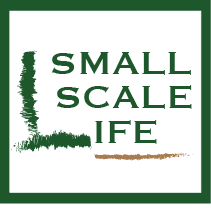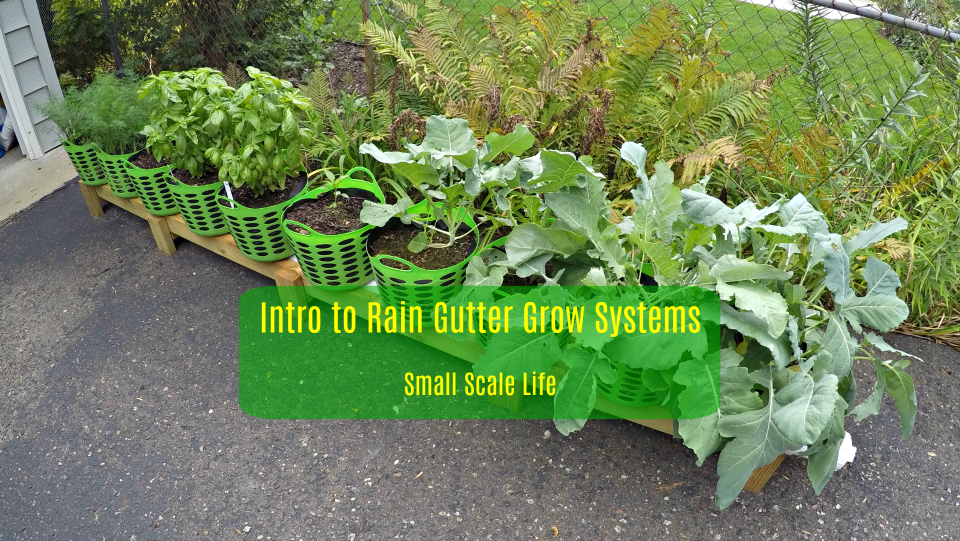Intro to Rain Gutter Grow Systems
What if you could successfully grow vegetables and/or herbs on your driveway and deck? What if you didn’t have to water that garden every day? In my experience, I have found that gardeners struggle to water plants routinely, especially if that person works a job away from home for extended periods of time (i.e., sales, transportation, medical positions or public service positions). What if you could automate the watering process completely while saving water at the same time? I have found a method of gardening that meets all of these needs. This method is a type of Wicking Beds called Rain Gutter Grow Systems, and in this post, I am going to introduce you to these systems. In future posts, I will show you how to construct Rain Gutter Grow Systems.
Revolutionary Acts and Accidents
It all started with a revolutionary act and a complete accident. In Brainerd, Minnesota, a gentleman named Larry Hall was upset by new taxes on tobacco products imposed by the Obama Administration. After looking at various YouTube videos, he decided to grow tobacco in his Minnesota garden. This forced Larry to try container gardens to grow vegetables, and soon he grew tired of constantly watering those containers in our hot Minnesota summers. Larry started to experiment with self-watering containers and through trial and error came up with the Rain Gutter Grow System. Larry talks about the inspiration on his YouTube Channel (the video is posted above). I had the pleasure of talking with Larry a few times, and he is a great guy. I hope to have him on the Small Scale Life Podcast in the near future!
My Experience

The basic elements of my first Rain Gutter Grow System: 3″ PVC Pipe (10′ long), 2″ Net Cups, Dollar Store Baskets, Landscape Fabric, and two 2″x4″x10′ boards.
I built my first Rain Gutter Grow System in 2014. It was actually considered a “Hybrid Rain Gutter Grow System” because I used a 3″ PVC pipe instead of a rain gutter. Regardless of the title, I successfully used this system from 2014 to 2017. While I had to dismantle it for our move to a different house, I will be installing the same system at my mom’s place next year.
Over the years, I have successfully grown a variety of vegetables and herbs in the Rain Gutter Grow Systems including:
- Cucumbers
- Peppers (Green Bell, Red Bell, and Jalapenos)
- Kohlrabi
- Basil
- Dill
- Broccoli
- Arugula
- Lettuce
- Swiss Chard
- Cilantro (not very successfully, but it was in poor shape when I planted it)
Benefits and Drawbacks for the Rain Gutter Grow System
In my experience, I have found the following benefits for using a Rain Gutter Grow System:
- Reduced watering; these are self-watering systems (you can “fire and forget” or go on vacation for a while)
- Reduced weeding; you are creating the soil in the containers
- Flexibility in materials and systems allows you to be very creative (i.e., buckets, root pouches, baskets, or totes for containing soil)
- Relative ease of construction; you are using 2″x4″x10′ boards, vinyl rain gutters/3″ PVC pipe and containers. Easy!
- Relatively low cost and maintenance
- I had the BEST cucumbers and peppers from the wicking bed system last year. I would love to replicate that production!
There are a few drawbacks for using the Rain Gutter Grow Systems concept including:
- Precise drilling in the holes for the net cups (I had some that were not quite lined up properly). The result is some leakage from the pipe.
- The system needs to be level. If it is not level, certain baskets or buckets will not get enough water for the capillary action to work correctly when it gets hot out.
- Pests like rabbits will eat unprotected plants (particularly with the Hybrid Rain Gutter Grow System – see the video above) and squirrels or chipmunks can dig in the baskets. Fencing should be required to keep pests out.
Next Steps and Future Posts

Wicking Beds are pretty easy to construct, and I had excellent results in this one in 2016!
I realize this is just the introduction to the system, and some of you are looking for the “How To,” so you can build these systems for yourself. In the very near future, I will be posting up more information in a separate post showing how to construct these various wicking bed systems including:
- Rain Gutter Grow System
- Hybrid Rain Gutter Grow System
- Grow Box
- Wicking Bed
I am pleased to announce that some materials I ordered have just arrived at the store, so I will be constructing the Next Generation of Wicking Bed in the VERY near future!
Please let us know what you want to see and know about these systems. This will help us respond to develop content and information that you can use and put into practice. To do this, please leave a comment below OR send a message to us using the new Contacts Page!
Small Scale Life
Intentional living through learning, doing and growing.
For more of Small Scale Life, find us at the following locations:
Blog: https://www.smallscalelife.com
Facebook: https://www.facebook.com/SmallScaleLife
Facebook Group: https://www.facebook.com/groups/smallscalelifepodcast/
Instagram: https://www.instagram.com/smallscalelife/
Twitter: https://www.twitter.com/SmallScaleLife
Pinterest: https://www.pinterest.com/SmallScaleLife/


Recent Comments